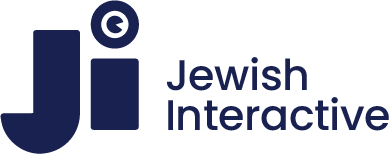Every fall, as students and teachers start another school year, the Jewish calendar also restarts and Jews around the world start the annual Torah reading by hearing the story of Creation. This presents a wonderful opportunity for Jewish educators, as the proliferation of Makerspaces and the pedagogy of ‘making’ are significant trends in contemporary education that are making significant inroads in Jewish education as well. Yet the Jewish connection to creating is not always obvious.
A careful look at the detailed description of building the mishkan in Parsha Terumah (Exodus 25:1 - 27:19) is a good place to start for guidance. The Israelites were commanded to build, to make, to create. Having spent many, many hours building with Lego in my youth, I can’t help but relate to these lines while picturing G-d’s commands in the unmistakable numerical font of Lego kit directions, with step by step images of dolphin skins, poles of acadia wood, and golden cherubim. Although students today have access to many more creation tools than Lego, such as laser cutters, 3D printers, and coding software, making is not new in the Jewish tradition.
Rabbi Sacks, in his d’var Torah on Parsha Terumah, suggests that G-d’s directive for the Israelites to build something together was transformative, changing them from passively following to taking action. Despite a reputation for complaining, when it was time to take responsibility for themselves and collaborate on a physical project, the Israelites got to work, and did so by enthusiastically contributing materials, time and skills. Rabbi Sacks argues that this is the moment when the Israelites “transition(ed) from passive recipients of God’s blessings to active creators.” Becoming active creators is what we seek in our schools. Not simply recipients of wisdom shared by experts, our students need to have agency, to be empowered to take ownership of their learning.
This happens when students work on meaningful, hands on projects, where they are solving real world problems by creating artifacts, either digital or material, that can be shared with the world. In projects as diverse as 3D design, digital game-making, film recording and coding, students grapple with Text, connect to Israel, develop Hebrew language proficiency and celebrate their way through the Jewish calendar and lifecycle. Just like the biblical Israelites, our students need to be creating projects that allow them to contribute to the community, allowing them to become, as Rabbi Sacks argues, G-d’s “partners in the work of creation.” [Shabbat 10a.]
The Jewish educational opportunities for students in Makerspaces encourages students to apply J-STEAM more broadly in order to learn, collaborate and demonstrate what they’ve learned. Their capacity to create is limited only by the creativity of the teachers, and more often, their students. Ritual objects such as mezuzahs for classroom doorposts or a yad to use when reading Torah can be created using 3D printers. Laser cutters can be used to create an Omer counter or box for tefillin. Students can use Scratch to code Hanukah programs that simulate candle lighting to share with home-bound seniors in a Jewish assisted living center. Students learning Hebrew have designed their “בית אידיאלי” (ideal home) using Minecraft and then recorded a guided tour using Hebrew vocabulary. The Jewish calendar is a great example of the intersection of Jewish content with science, as this app demonstrates.
Rabbi Sacks’s description of the Israelites is also very apt to describe the students we want to see in our Jewish classrooms. Sacks cites Berakhot 64a:13 stating “that, I believe, is what the sages meant when they said, ‘Call them not “your children”(banayikh) but “your builders”(bonayikh).”
In J-STEAM learning opportunities, students use a Jewish lens to understand, and more importantly, to contribute to the world. By integrating important science, technology, engineering and math content with both fine arts and liberal arts, students develop integrated identities, ready to meaningfully contribute to their world. And thus we can call them, not just children, but indeed bonayikh.





